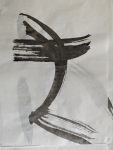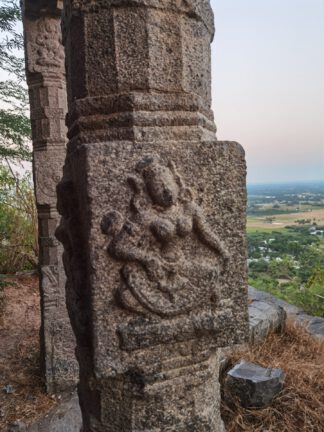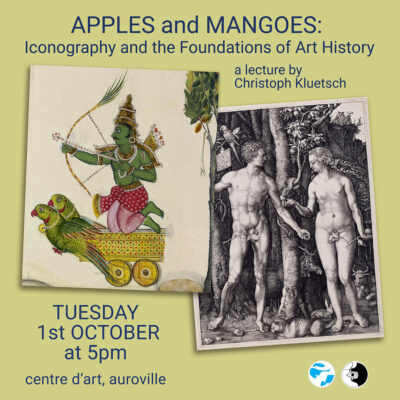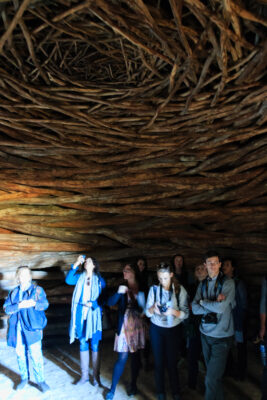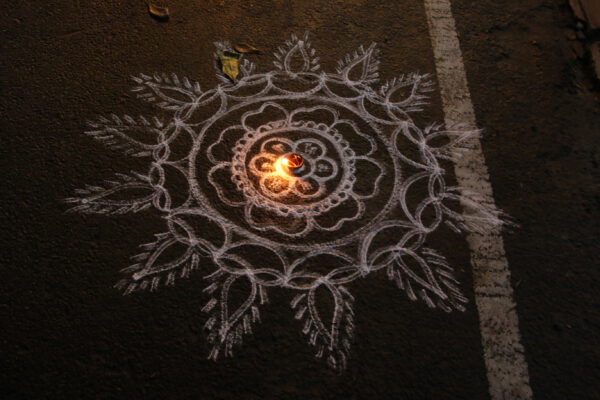When I read a book, watch a movie, immerse myself in a painting or take part in a performance, what exactly is happening? I am experiencing something, images, feelings and experiences are awakened in me. Imagine a movie, a book, a play or a painting that is about human relationships, action, history or fairy tales. So you're sitting somewhere looking at something that tells some kind of story. Now, what's the difference between looking at a story and contemplating, say, looking at the bottom of a clear, living lake where fish and plants, stones and sun reflections invite you to contemplate the universe? Is it not the case that one thing, art created by another person, tells one story, and nature, created quite differently, tells a different story? One difference seems to be time. In art, the artist can shape space and time, the narrative can jump, the space can change with a cut, one feeling can change to another without a transition. For us, the colorful hustle and bustle of the cosmos that tells its story takes place in a space-time continuum. We can move faster or slower within it, we can fly or walk slowly, but we cannot change time.
What we can do, however, is use our memory, our mind and our perception to focus on various elements from our environment and link them together in our consciousness. This world of experience makes up our waking consciousness and sometimes also our dream consciousness. We bring a consciousness with us into the world.
Now we already have a whole host of different roles here: a person who experiences the world as an observer, an artist who expresses his experience and makes it tangible for others, and the world itself, which in its expansion in space and time provides the basis for those experiences. We can make direct contact with the world, reflect on it and inquire into its deeper meaning. We can try to establish a connection to what holds the world together within, i.e. to experience a principle, a force, an origin that goes beyond that of which I am a part. This going beyond is now to be regarded with a little caution, as it immediately raises the question of duality. Is something beyond that of which I am a part, or is the whole of which I am a part, in the form of immanence, the whole that is thought of as such as transcendent, but is not?
The question of duality is important here, because from here we can ask what the role of art really is. Is art something that creates a kind of world that the viewer can immerse themselves in, as something that is different, that confronts me, an illusion, a representation, a simulation? Or is art part of the world in the sense that the consciousness that created it has expressed something that each of us can experience, at least structurally? And what makes art special here is the possibility of expressing it in a medium that is independent of the artist's consciousness.
That's quite amazing. There are different ways of thinking about it. I can understand art as a system of signs, i.e. I can look at it semiotically, like a language. I identify elements of the artwork and bring them before my inner eye in the form of linguistic or semiotic structures of consciousness - be it visual, auditory, gustatory, physical or olfactory - depending on which is the dominant medium here. So I can say: "I see or hear or taste x." This x, if previously perceived similarly by an artist, would be the content of the work. Most art theories stop here and now concentrate on the formal elements of x. Is x interesting, new, surprising, provocative, emotional, etc.?
However, the underlying principle here is consciousness itself. Consciousness experiences, creates and shares. The world itself unfolds in the work of art in a very special way. The work of art offers us the opportunity to reflect on the experience of the world itself and to understand it in the experience itself as sublime, as bliss, as transcendent. When it comes to art that critically engages with reality and shows us what is not going well, where there is suffering and injustice, this may be more difficult to accept, but qualitatively it also remains that experience.
In India, this is referred to as rasa, literally taste. However, it denotes precisely the experience that is shared between artist and audience through expression, but which at its core refers to the general consciousness, the immanence, Brahman. Art is thus essentially not merely anchored in the material world and the world of the living, of knowledge and the intellect, but reaches into the realm of the contemplative, the meditative. It is part of Satchitananda.
I realize that I have become tired of looking at art in purely formal terms. That misses the point of art and even the point of our existence. Art is merely a form of expression that Brahman has given itself. Art is immanent, it is a knot that connects different things and creates lines on a material basis, the work. The experience of it is different for everyone, so talking and writing about it only makes sense up to a certain point. What you can't talk about, you should keep quiet about. But that doesn't mean that there is nothing there. On the contrary, this is where it gets really interesting.

